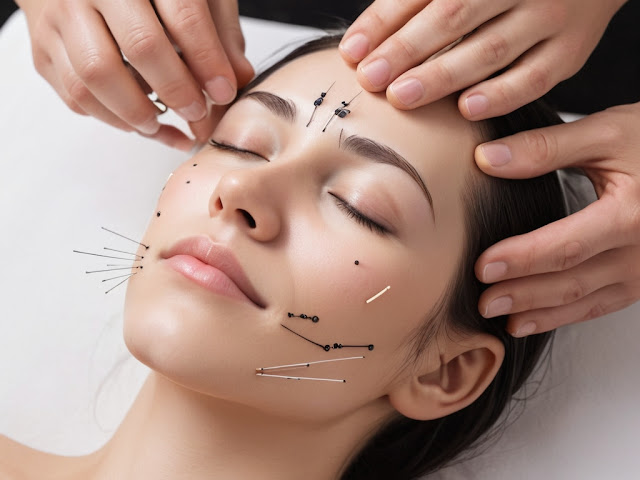Title: How Does Botox Differ from Dysport or Xeomin? Understanding the Key Differences
When it comes to reducing wrinkles and fine lines, Botox, Dysport, and Xeomin are three of the most popular injectable treatments. While all three products are made from botulinum toxin and work similarly by relaxing facial muscles, there are subtle differences that may make one a better choice for your specific needs. This article will explore how Botox differs from Dysport and Xeomin, helping you make an informed decision about the right option for you.
The Basics of Botox, Dysport, and Xeomin
Botox, Dysport, and Xeomin are all FDA-approved treatments used to temporarily reduce the appearance of dynamic wrinkles—lines caused by repeated muscle movements, such as frown lines, crow’s feet, and forehead wrinkles. They work by blocking nerve signals to the muscles, causing them to relax and smooth out the overlying skin.
Common Features:
Active Ingredient: All three are derived from botulinum toxin Type A.
Mechanism of Action: Temporarily paralyze targeted muscles to reduce wrinkles.
Longevity of Results: Effects typically last between three to six months.
Safety: All three are considered safe when administered by a trained professional.
Key Differences Between Botox, Dysport, and Xeomin
While the similarities are notable, there are critical differences between Botox, Dysport, and Xeomin. These differences are primarily in formulation, diffusion, onset of action, and ideal use cases.
1. Formulation and Additives
Botox:
Botox contains botulinum toxin Type A along with accessory proteins, which help stabilize the toxin. This composition can sometimes trigger an immune response, making the body resistant to treatment over time for some patients.
Dysport:
Dysport also includes botulinum toxin Type A and similar accessory proteins. However, it is formulated differently, allowing it to spread more widely in the treatment area.
Xeomin:
Xeomin is unique because it is a “naked” botulinum toxin, free of any accessory proteins. This means it contains only the active neurotoxin. This reduces the risk of the body developing resistance to the treatment over time.
2. Diffusion and Spread
Botox:
Has a more localized effect, making it ideal for small, precise areas like crow’s feet and forehead lines.
Dysport:
Spreads more widely after injection, which can be beneficial for treating larger areas or smoothing out wrinkles over broader regions, such as the forehead.
Xeomin:
Similar to Botox in terms of diffusion, Xeomin’s precise delivery is suited for targeted treatments where spreading is not desired.
3. Onset of Results
Botox:
Results typically start to appear within 3 to 5 days, with full effects visible at 7 to 10 days.
Dysport:
Has a faster onset of action, with some patients noticing results as early as 24 to 48 hours.
Xeomin:
Results emerge within 3 to 4 days, comparable to Botox, though some patients report slightly slower full effects.
4. Cost
Pricing for Botox, Dysport, and Xeomin can vary depending on the provider, location, and the number of units required. Dysport is often priced lower per unit but may require more units than Botox or Xeomin for the same treatment area, evening out the cost. Xeomin’s pricing is generally comparable to Botox.
5. Ideal Use Cases
Botox:
Best for small, targeted areas where precision is critical.
Suitable for first-time users or those with mild to moderate wrinkles.
Dysport:
Ideal for treating larger areas due to its ability to spread over broader regions.
May be preferred for patients needing quicker results.
Xeomin:
A good option for patients who have developed resistance to Botox or Dysport.
Preferred for individuals seeking a treatment without accessory proteins.
Which Treatment is Right for You?
Choosing between Botox, Dysport, and Xeomin depends on your specific needs, the treatment area, and your desired results. Here are some considerations to help guide your decision:
Precision: If you need precise treatment for smaller areas, Botox or Xeomin may be the best choice.
Larger Areas: For broader treatment areas, Dysport may provide better coverage.
Allergic Reactions: If you’ve experienced resistance or side effects from Botox or Dysport, Xeomin’s pure formulation may be more suitable.
Speed of Results: For quicker results, Dysport might be the preferred option.
Consulting a Qualified Provider
The best way to determine the right treatment for you is by consulting a qualified healthcare provider. A skilled professional can assess your concerns, facial anatomy, and goals to recommend the most appropriate injectable for your needs. They can also discuss potential side effects, expected results, and the number of units required for optimal outcomes.
Conclusion
While Botox, Dysport, and Xeomin all serve a similar purpose, their differences in formulation, diffusion, onset, and ideal use cases make them unique options for wrinkle reduction and muscle relaxation. Whether you choose Botox for its precision, Dysport for its quick results, or Xeomin for its pure formulation, consulting with a trusted provider ensures you achieve the best possible results tailored to your specific needs. With the right choice, you can enjoy a smoother, more youthful appearance with minimal downtime.











